Piaget’s Quest for the World’s Thinnest Mechanical Watch, the Altiplano Ultimate Concept
Challenging watchmaking to change ultra-thin forever.
Thin for Piaget is more than just a design statement. Thin is more than just a solution to build movements. Thin is a motto, an integral part of the brand’s DNA for decades. Pushing the concept of thin to new heights has been a quest for the brand, and this quest has found its climax, the ultimate point where thin has changed watchmaking to an unprecedented point. The result of this quest for ultra-thin has a name, the Piaget Altiplano Ultimate Concept and today you’ll experience what thin – exceptionally thin – really means.
What is a thin watch? The concept of a thin watch for most is translated as a figure of around 5 or 6 millimetres. And you’d be right to think so. Such measurements are entirely in line with the notion of an ultra-thin watch. Elegant and slim. But now picture this. Pick up a regular coin – one euro or five Swiss francs – and look at its edge. Certainly, this is much thinner than you’d imagine the profile of a thin watch to be. Unless… unless you’re Piaget and you’ve developed the thinnest mechanical watch in the world, a watch that measures, all parts included, a couple of millimetres. Yes, 2mm. This is what the master of the ultra-thin has achieved with the Altiplano Ultimate Concept. And this has been recognized by the industry, as this watch has received the award for the best watch of the year, the Aiguille d’Or at the GPHG 2020.
The quest for thinness
Creating a watch that is no thicker than a US one-dollar coin involves a lot more than a decision in a board meeting. It takes an incredible spirit of innovation and a consolidated track record in the mastery of the ultra-thin. It takes a fresh mind to rethink the entire construction of a watch and its movement.
“Piaget has always been, from the beginning, on this expertise of ultra-thin and on elegant designs” Chabi Nouri, CEO of Piaget
Piaget, the brand that embraces the family motto “always do better than necessary” has, from its earliest day, focused on this specific area of watchmaking. It has reached such extreme levels of thinness that you wonder if a next step is even possible. The creation of ultra-thin watches is a challenging art uniting elegance and the most precise horological technology. And Piaget is an indisputable master of this art.
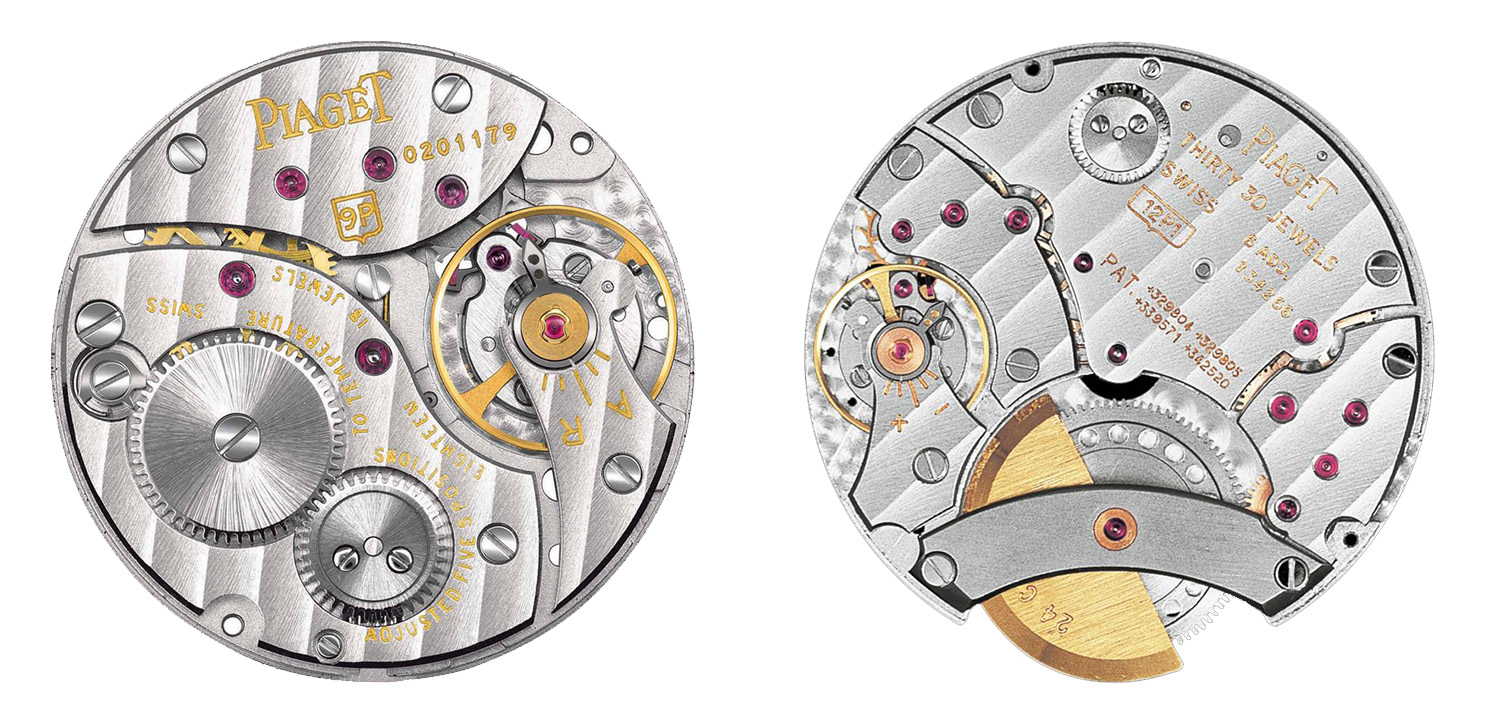
Founded in 1874 in La Cote-aux-Fées, a small village in the Jura Mountains, Piaget has cultivated a unique horological legacy specialising in ultra-thin watches. Starting with the manufacture of ultra-thin components, in 1957 Piaget released the ultra-thin, hand-wound 9P calibre measuring just 2mm thick. In 1960, the calibre 12P – with a thickness of just 2.3mm – marked another milestone as the world’s thinnest automatic movement. Over the years, the brand has set numerous world records of thinness with automatic or manual movements, with or without complications. In 2018, Piaget took back the record for the thinnest automatic watch when the Altiplano 910P – 4.30mm thick, with a peripheral rotor – was unveiled.
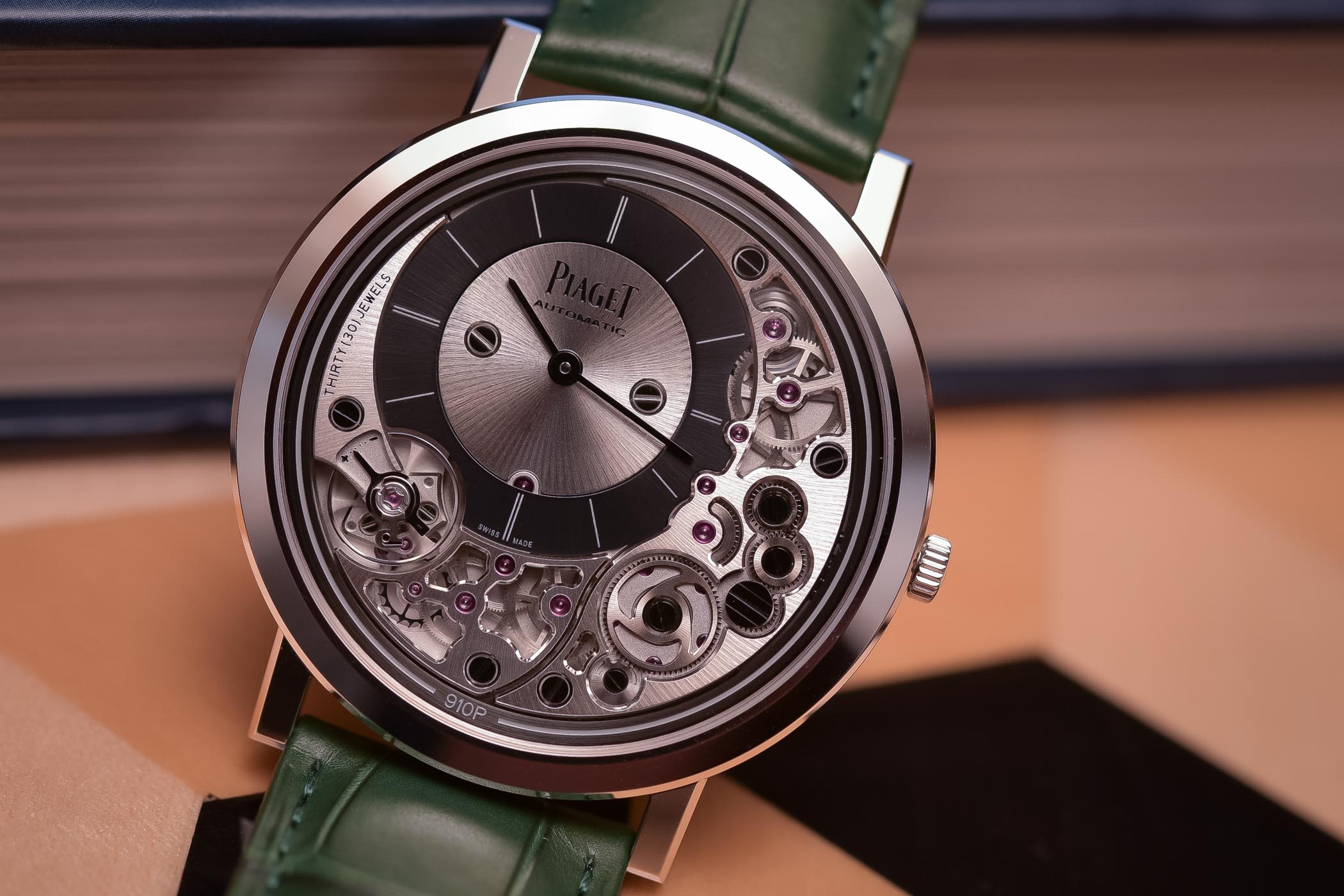
In its quest for infinite slenderness, Piaget wanted to make a statement, and in 2018 the brand presented the Altiplano Ultimate Concept watch: the thinnest mechanical watch in the world. Following a radical re-engineering, the case and the hand-wound movement have been whittled down to a height of just 2mm, the same height as the historical calibre 9P of 1957. But here, we’re talking about the height of the whole watch, not just the movement.

Back then, we questioned the feasibility of this concept watch, but Piaget proved us wrong. In 2020, the Altiplano Ultimate Concept became a reality – a rare reality that you’ll hardly ever experience in the wild – yet a watch that evolved from a concept watch into a fully developed model available as part of the bespoke “Infinitely Personal” customisation service.
The Piaget Altiplano Ultimate Concept
The Piaget Altiplano Ultimate Concept is a radical redefinition of the architecture of a watch, resulting in the filing of no fewer than five patents. It took four years of R&D to achieve the concept and two more years to finalise the watch you see today.
Its absolute slenderness has been achieved by fusing the movement’s mainplate, the case, and the bezel into one single component. To ensure sufficient rigidity, it is fashioned out of an ultra-resistant cobalt alloy. All tolerances have been reduced to minimum levels. For instance, the crystal is only 0.2mm thick and some wheels are less than 0.1mm. The concept goes even further than the 900P or 910P. The watch features just two levels: the caseback, bezel, mainplate and glass on one level, and the dial, hands and movement components on the other. Achieving this slenderness meant rethinking the entire architecture because the movement is now part of the case, and the caseback acts as its mainplate.
The watch is powered by calibre 900P-UP operating at 28,800 vibrations per hour. Once again, tolerances have been reduced to minimum levels, and the movement incorporates numerous innovations to shave off crucial tenths of a millimetre. Several wheels are mounted on ball bearings, eliminating the need for a bridge and explaining the low jewel count. The ball-bearing mounted mainspring, with no cover and no drum, is integrated into a recess machined directly into the caseback. The ratchet wheel and the barrel arbour are one part only and close off the top of the barrel. Despite the incredible finesse of the construction, it allows the Altiplano Ultimate Concept to store up to 44 hours of power reserve.
The crown has been completely re-engineered. It is flat, telescopic (with its own, specially designed winding tool) and perfectly integrated into the caseband. The traditional sliding pinion clutch and crown wheel are substituted with an ‘infinite screw’. The off-centred dial required the development of a patented ‘’staggered’ stem. And because of that, a winding tool is provided with the watch. These are some of the innovations that Piaget had to incorporate to make such a thin watch.
ultra-thin at the service of design
But the Altiplano Ultimate Concept is more than a series of numbers and innovations. Its thinness assists the design and its ultimate elegance. The watch almost disappears; it becomes an integral part of your attire. This is why, with the Altiplano Ultimate Concept, Piaget didn’t want to produce a watch, but instead to offer owners their own watch; a timepiece intimately connected to them, an “infinitely personal” watch.
Following a tradition of bespoke and customisation options on exclusive timepieces that Piaget started in the 1960s, the Altiplano Ultimate Concept can be fully personalised down to the smallest elements. Through the Piaget “Infinitely Personal” service, the future owner of an AUC will be able to select the colour of the case, of the bridges and its screws, of the back of the movement, of the hands, of the dial, what to be engraved on a dedicated plate on the movement, and of course, the material and colour of the strap. With over 195,000 possible combinations, there will be no two identical Altiplano Ultimate Concepts.
With the Altiplano Ultimate Concept Piaget demonstrates its incredible savoir-faire in ultra-thin watches, but also its mastery of elegance and refinement. The AUC is more than just a 2mm watch; it sums up all the experience of a watchmaker in the art of ultra-thin and its commitment to this unique expression of time.
For more details, visit Piaget.com.

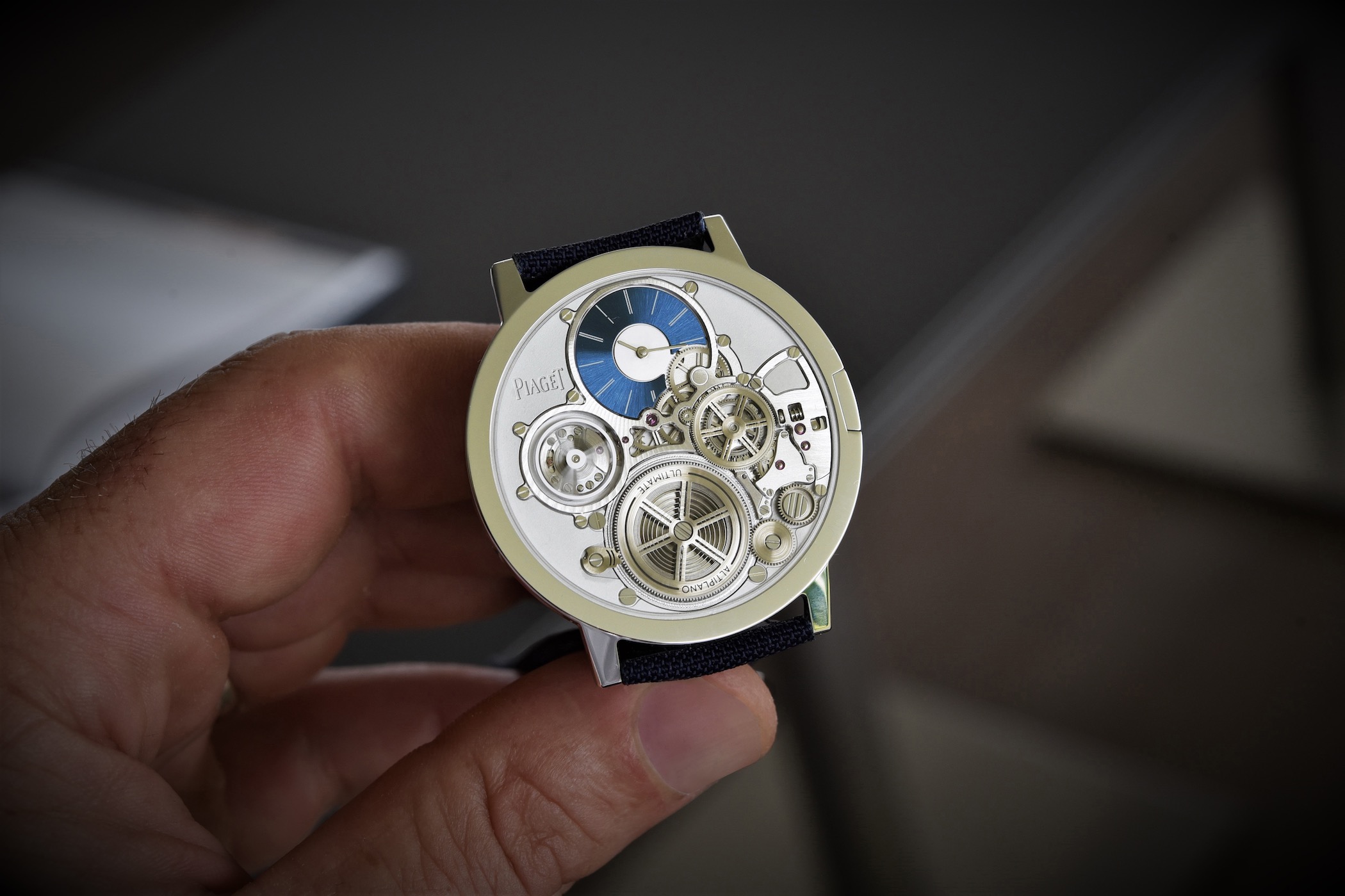
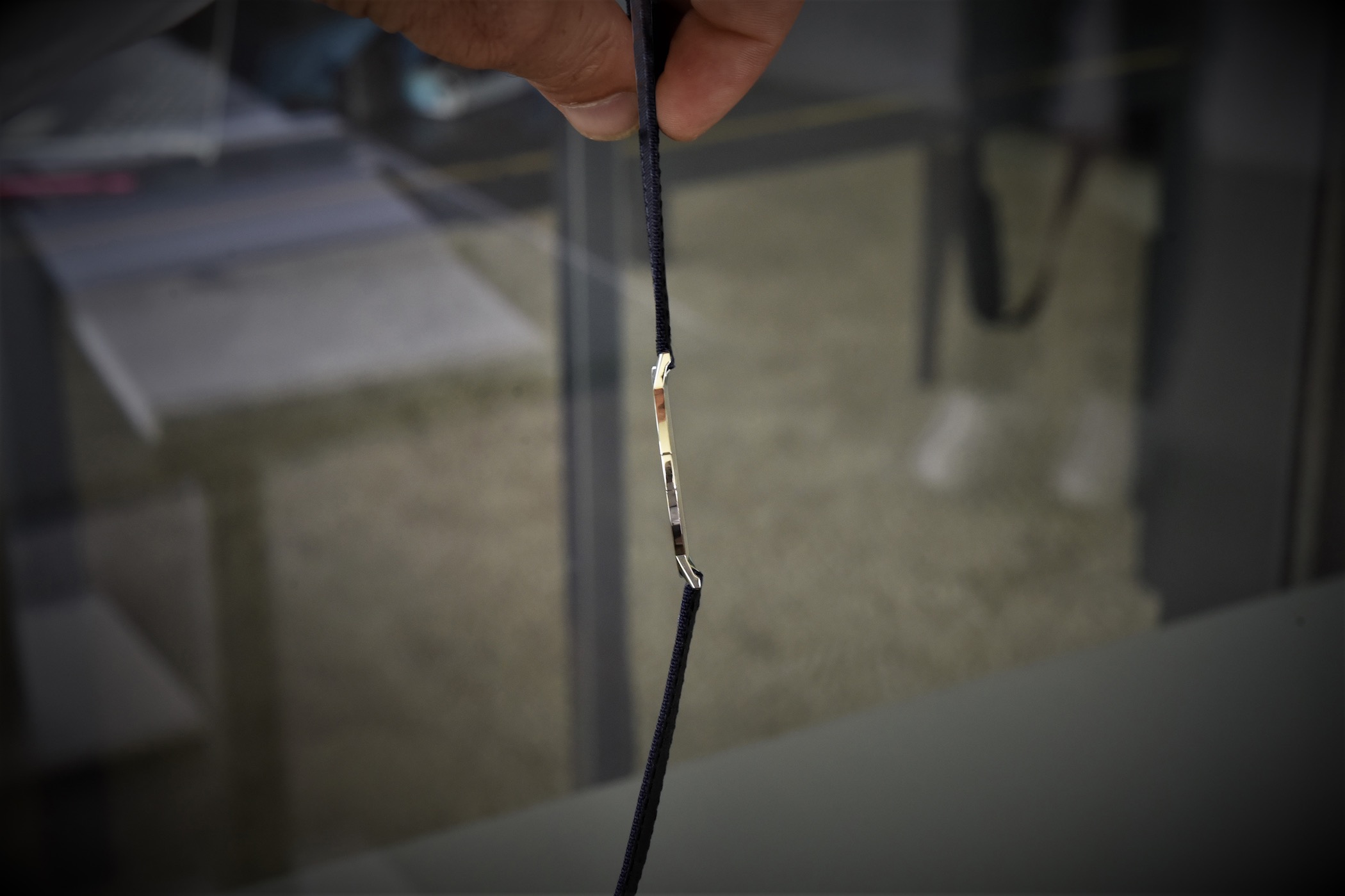

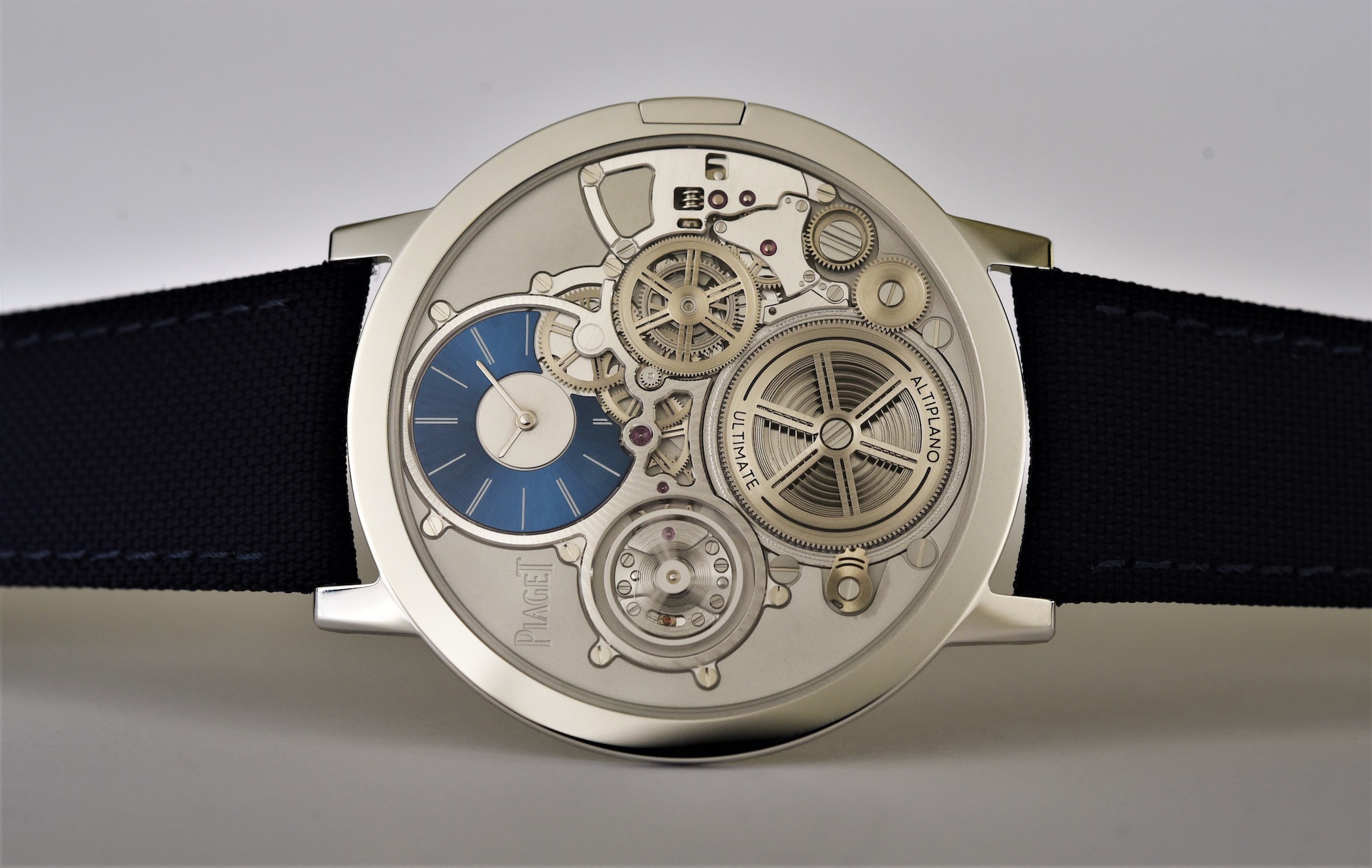
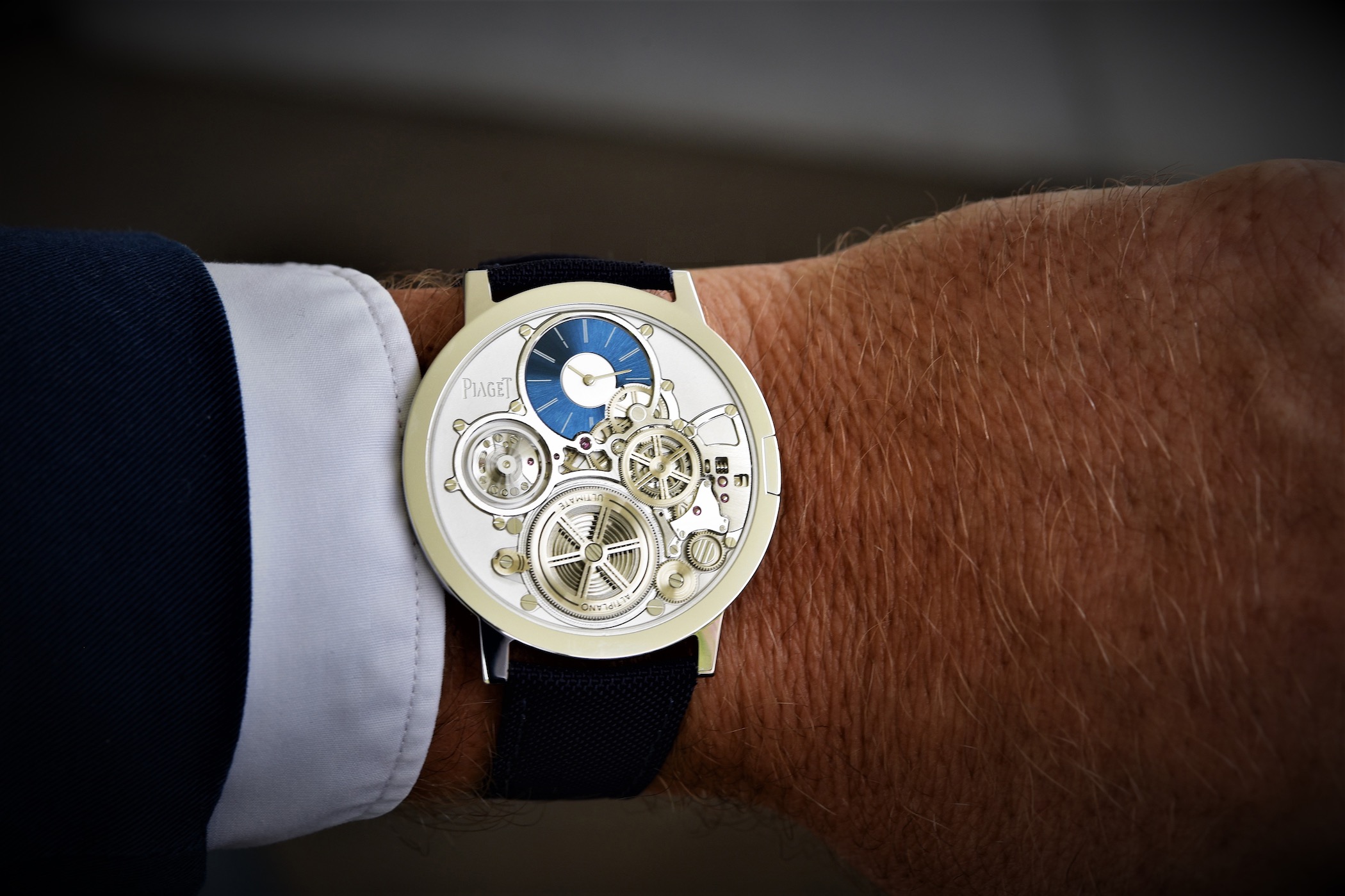
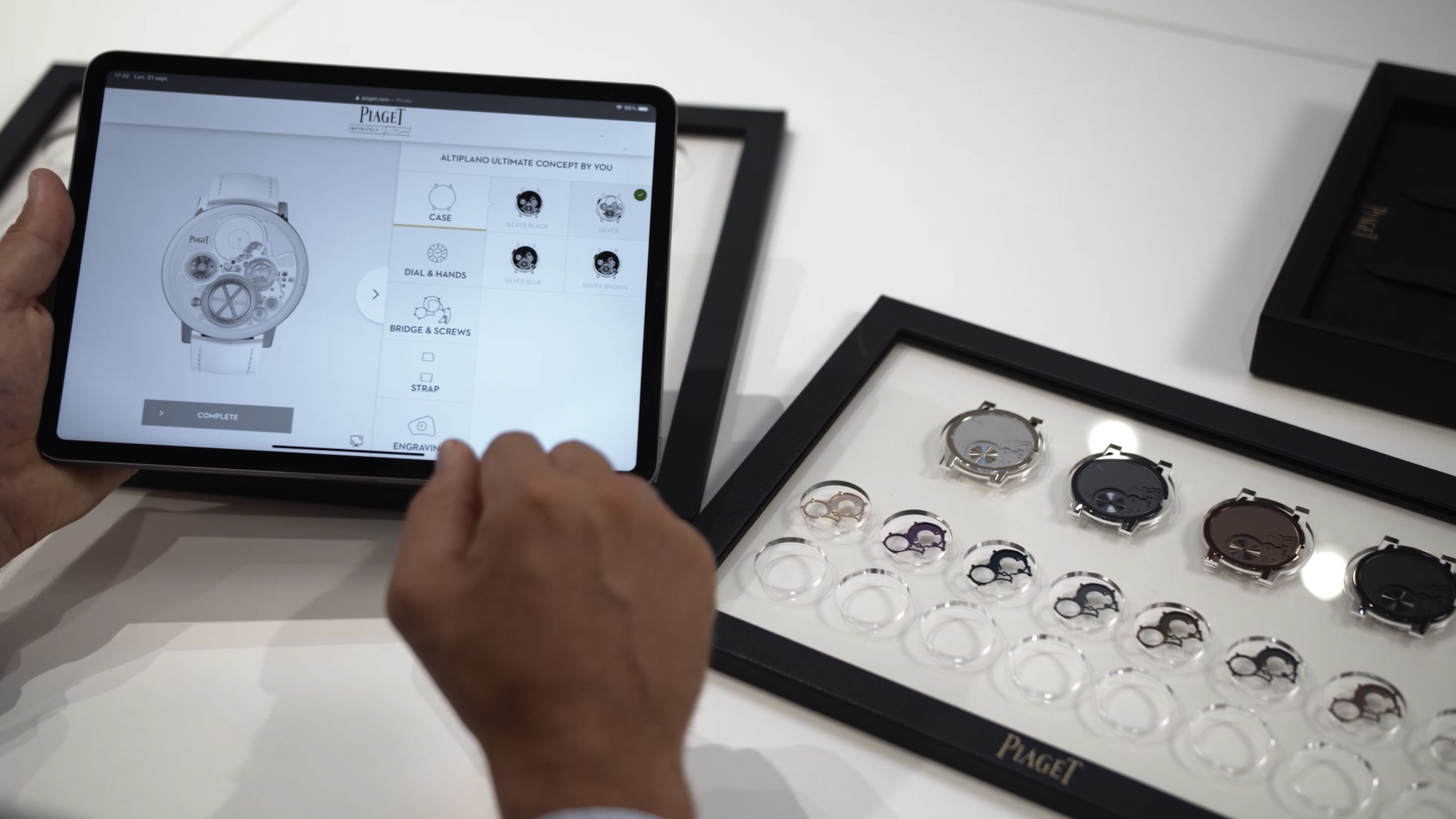




1 response
Very clever as an engineering exercise. It looks like a fairly large diameter watch on the wrist and judging by the size of the thumb nail in the picture a dial of about 15mm diameter, or really two thirds of a dial, but then nothing interesting is going to happen between 3 o’clock and 7. Didn’t spot any prices, just a novelty, £25?